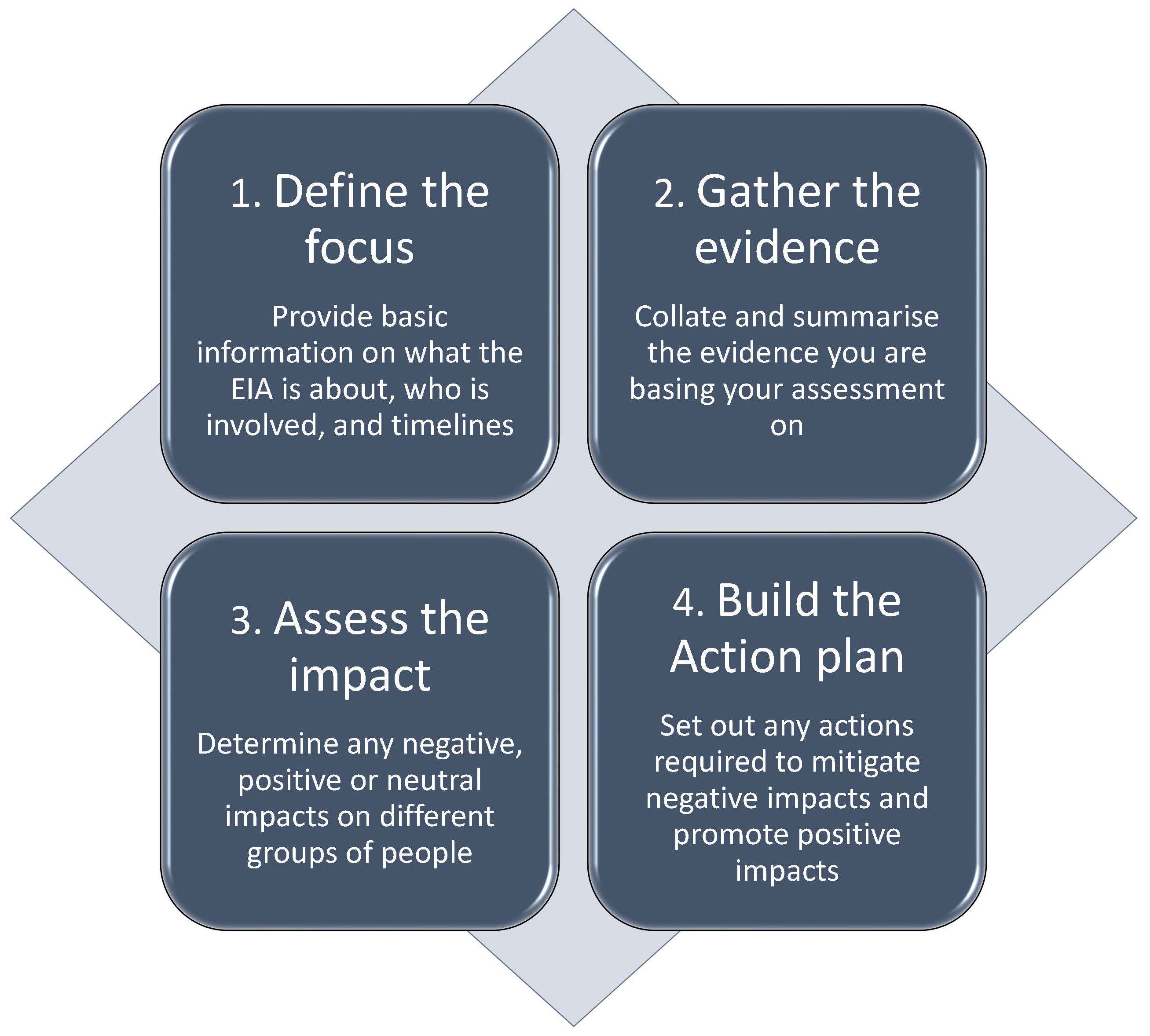EIA Stage 5: Submit for sign-off


In Stage 5 your drafted EIA will be reviewed, approved and signed off by the EDI team
Once the EIA is completed, and depending on the impact identified, there are three available options:
- Stop/pause – In some cases, where negative impact has been identified, and there appear not to be other proportionate ways to achieve the aim of the policy or practice, you may decide to stop and provide justification for this decision. Or you may decide to pause until you know more about impacts and what steps might be taken.
- Adapt in order to address impacts – If any bias towards one or more groups is identified, you may decide to adapt the policy in a way which will eliminate or minimise the risks of disadvantage and/or promote positive impact. If you choose this option, you should set out the actions required at Stage 4. In most cases, where negative impact has been identified, proposals can be adapted to reduce the risk of discrimination.
- Proceed as planned – Decide to proceed without any changes if the assessment indicates no barriers or negative impacts at this time. If negative impacts have been identified but they can be objectively justified i.e. there is no reasonable alternative to achieve the aims and/or it is critical to business needs, and it is a ‘proportionate means of achieving a legitimate aim’, you may decide you need to proceed anyway. If you take this decision, you will need to record your decision and rationale and ensure the senior manager / senior leader in your area is in agreement before proceeding. You can also contact the EDI team for further advice.
The Eleanor Glanville Institute will support the EIA owner in the final decision and sign off.
The approved EIA should be retained locally along with relevant accompanying documents, such as the policy/proposal in question. You may need a copy of the EIA as evidence that EDI has been considered. The owner of the EIA is ultimately accountable for the decision, development of actions and mitigations, and ongoing monitoring of the EIA.




